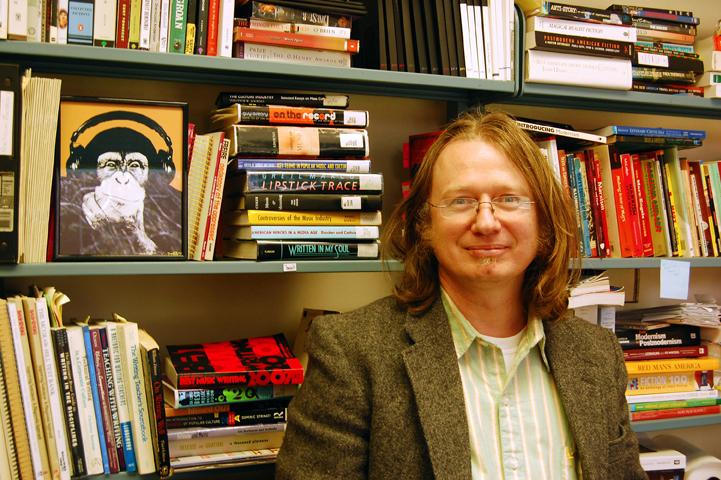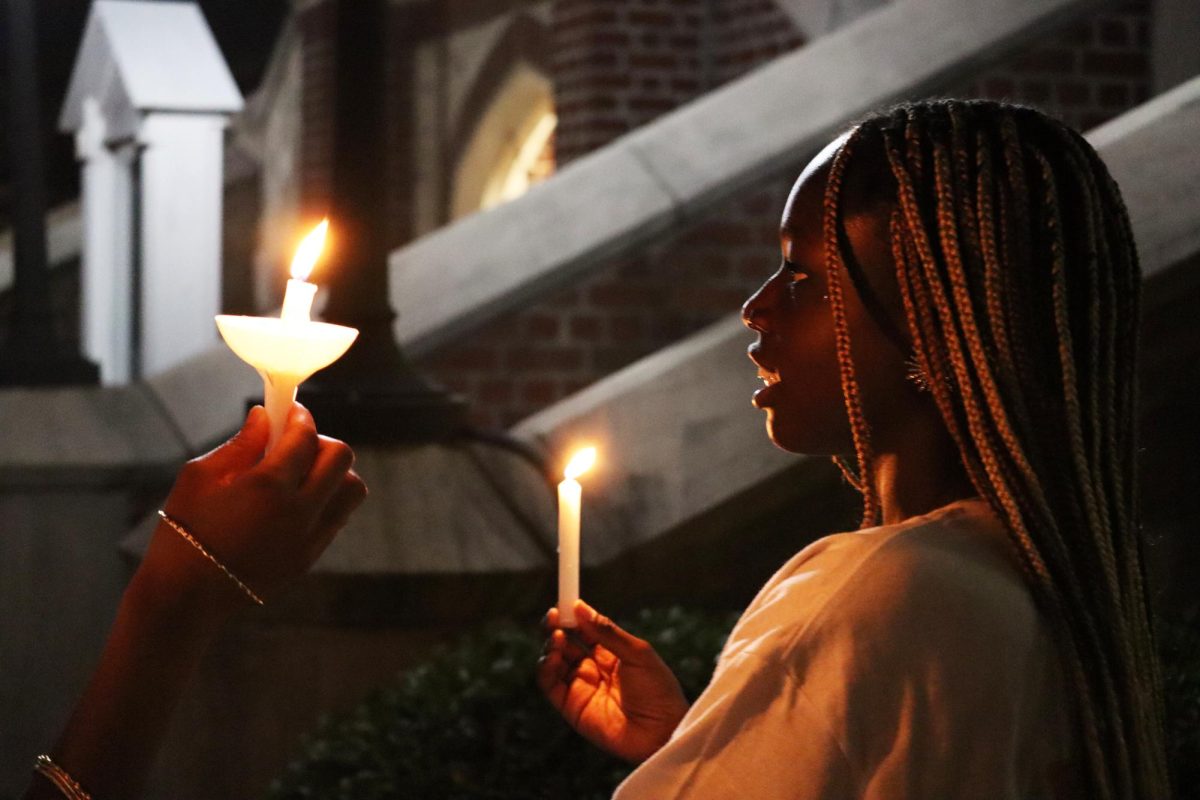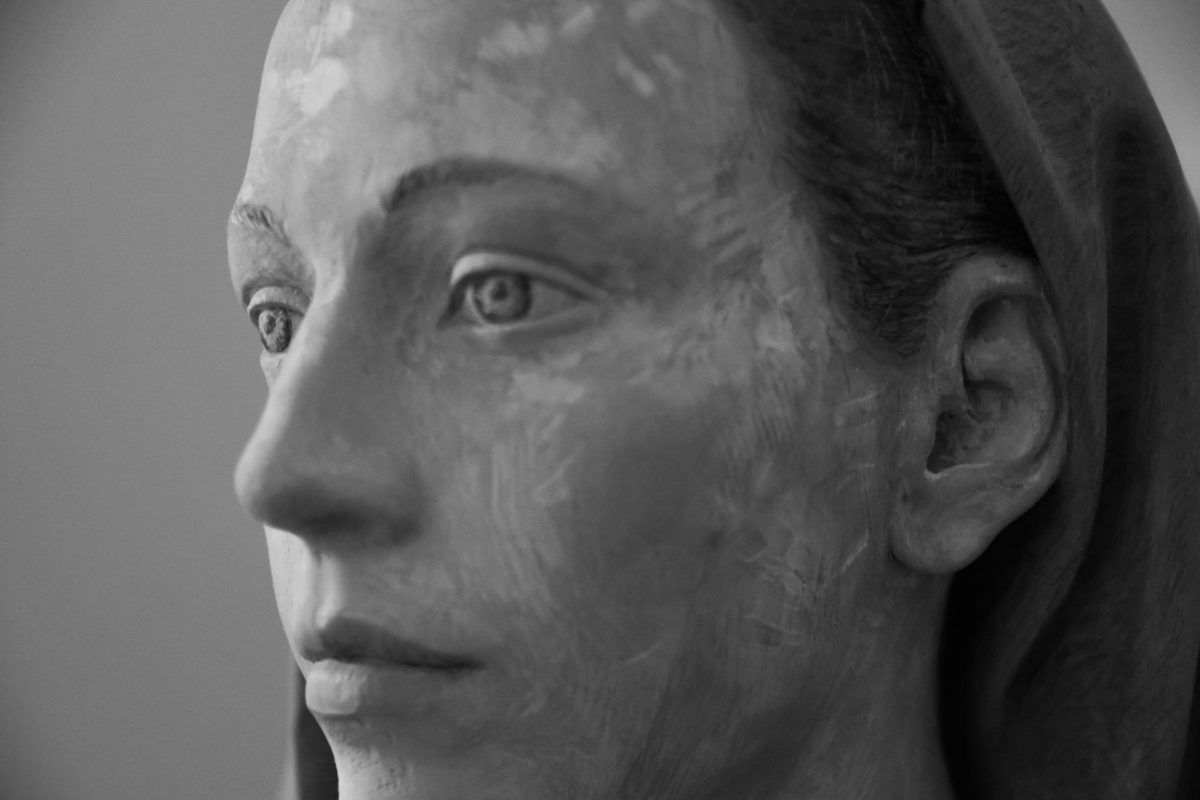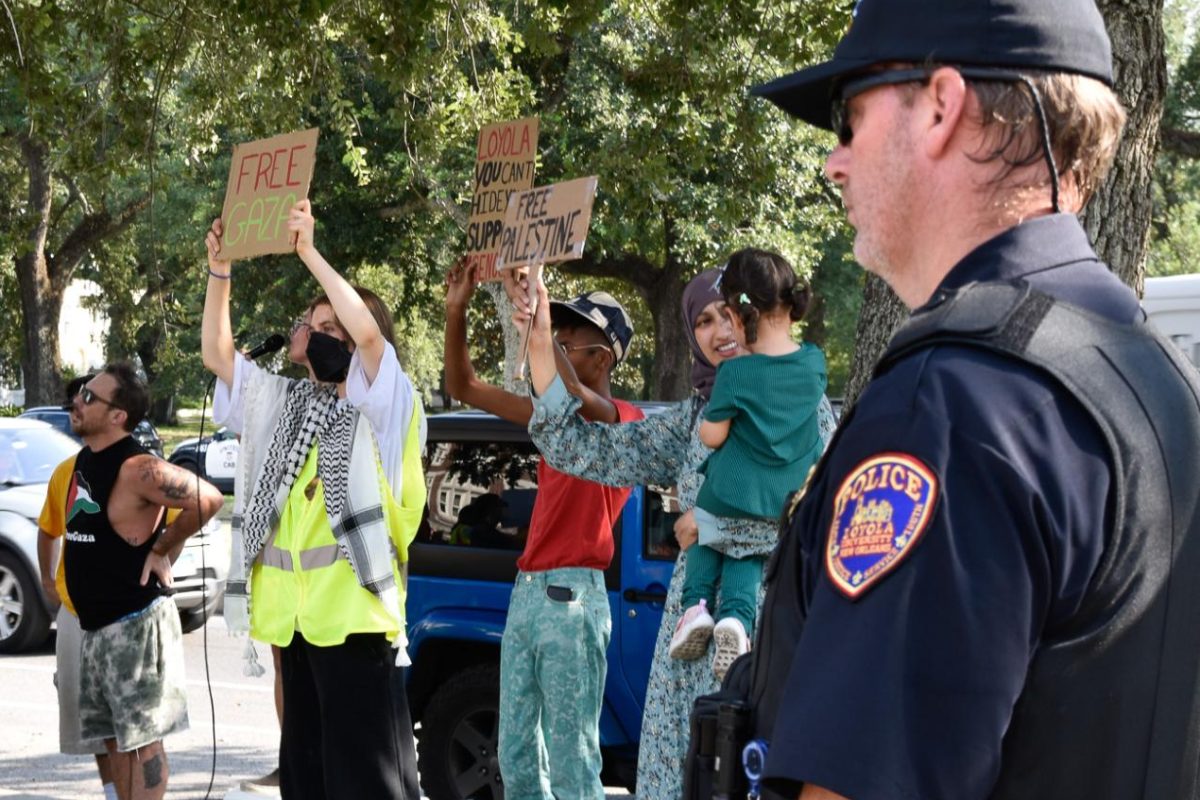“Constance,” in its first issue, addressed a city brimming with optimism after Hurricane Katrina by asking its readers what to do with their despair. But how? In the book’s second issue, “Delicate Burdens,” writers like Loyola English professors Robert Bell and Chris Chambers send their response. Now all that’s left to answer is “why.”
But both writers left out one key word from their prose.
“I didn’t mention Katrina,” Bell said. “It’s not about Katrina. It’s about an immense failure.”
Bell started writing “This Is What It Takes” once he saw the call for submissions for “Constance.”
“For the longest time, I couldn’t write about Katrina. I was living it,” he said.
“I saw the call – something like ‘what does it mean to live in the city now?’ I’m a good ranter, so this was a good opportunity to rant.”
The only flood Chambers mentions in his “Independence Day” is one from a broken water main.
“The word Katrina has taken on the same kind of weighty significance that the numbers 9/11 have in our culture,” he said. “It’s difficult to use them in a poem or a story without having that weight bring the whole thing crashing down.”
If contemporary New Orleans is one that is synonymous with disaster, “Constance” asks how to focus on its resurrection.
“I wanted to evoke something of the feeling of living in New Orleans in the first year or so after,” Chambers said. “(The story) is not about the storm or the flood, but about the aftermath in which we are still living, the struggle of those who returned to comprehend and adapt to the new reality.”
“THIS IS WHAT IT TAKES”
“It’s not easy for everybody,” Bell said.
Writing about Katrina evokes much more than a flood.
“Just the fact that you’re paying attention and outraged on a daily basis – you see all these missed opportunities and a lack of leadership,” he said.
Bell’s short story “This Is What It Takes” thrusts the reader into a list of demands provided by the narrator in a frantic attempt to control the disaster around him. “It takes a lot,” it begins. For the narrator, the scope of suffering can only be a thing of the silver screen – something one would find in a summer blockbuster. But it still wouldn’t even come close. It takes much more than a Hollywood ending.
Laced with a primitive urgency and typical self-deprecating New Orleans humor, the narrator realizes not just the loss of his home but also the failure of intervention.
After losing his work in the wake of Katrina, Bell saw it as an opportunity to start fresh.
“I thought, ‘Great, now I don’t have to worry about it anymore,'” he said. “The artist should never be able to reach what they’re going for. I’m not happy enough to be like ‘you need to read this.'”
When Bell evacuated to Florida, he pictured a bright future for a post-Katrina city.
“I thought the city was going to be built fast – it would be a utopia,” he said.
Once the news reports started rolling in, though, Bell knew one disaster could only bring more of the same – or worse.
“We’ve seen a network of institutionalized failure, and we’re just seeing it all crystallize in this moment,” he said. “For years the government has resisted putting money into what normal people utilize. We need to reinvest in our people.”
But for outsiders, reinvesting in us stubborn New Orleanians might be tricky. After all, we’re the ones who stuck around.
“If we were smart we’d all walk away, but living here is like an abusive relationship,” Bell said. “We just sit with a martini and second-line to our own flogging.”
“INDEPENDENCE DAY”
But for Chambers’ narrator, leaving might not sound like such a bad idea.
In “Independence Day,” Chambers’ near-Western narrator suggests going yonder after a hazy evening in a broken-down New Orleans.
“He’s imagining himself leaving town,” he said. “Which is a path most of us, I think, have entertained at some point since returning. But actually leaving is a different and more difficult thing. And ‘Constance’ is a good example of what keeps me hopeful about our future here.”
With his second submission to “Constance,” Chambers slimmed down a 3,500-word beginning to a much larger story to the 1,500-word short.
Skirting around a patchy New Orleans landscape in a weathered Volvo, Chambers’ narrator paints a portrait of a city that is less Mardi Gras and more Baghdad. The narrator and his friend spend their Fourth of July firing rounds from a levee, but their assault rifle becomes more than a gun-show souvenir – it becomes a line divider, separating us from them, the new from the old, those willing to rebuild and those who abandoned, and the people with whom we share the city.
But getting there wasn’t easy.
“It’s difficult to write about a place or an experience if you’re too close to it, and I think that’s particularly true of post-Katrina New Orleans,” Chambers said. “That said, I think it’s important that New Orleans writers attempt to write about life here at this moment in time. I think it was Tom Robbins who once wrote that there’s nothing like a little suffering to give some backbone to your art. It’s not easy, but it is necessary.”
Chambers hopes to see “Constance” continuing its quest in asking why New Orleans pushes forward.
“I do hope and expect we’ll see another issue of ‘Constance’ documenting the next chapter of the new New Orleans as it continues to crawl from the wreckage,” he said. “And I look forward to seeing the writing, the visual art and the graphic design that the city will produce this next year.”
Alex Wooodward can be reached at [email protected].

Loyola English professor Chris Chambers in one of the “Constance” writers. His piece “Independence Day” was an outlet for rants and realization. (Kevin Carey)








